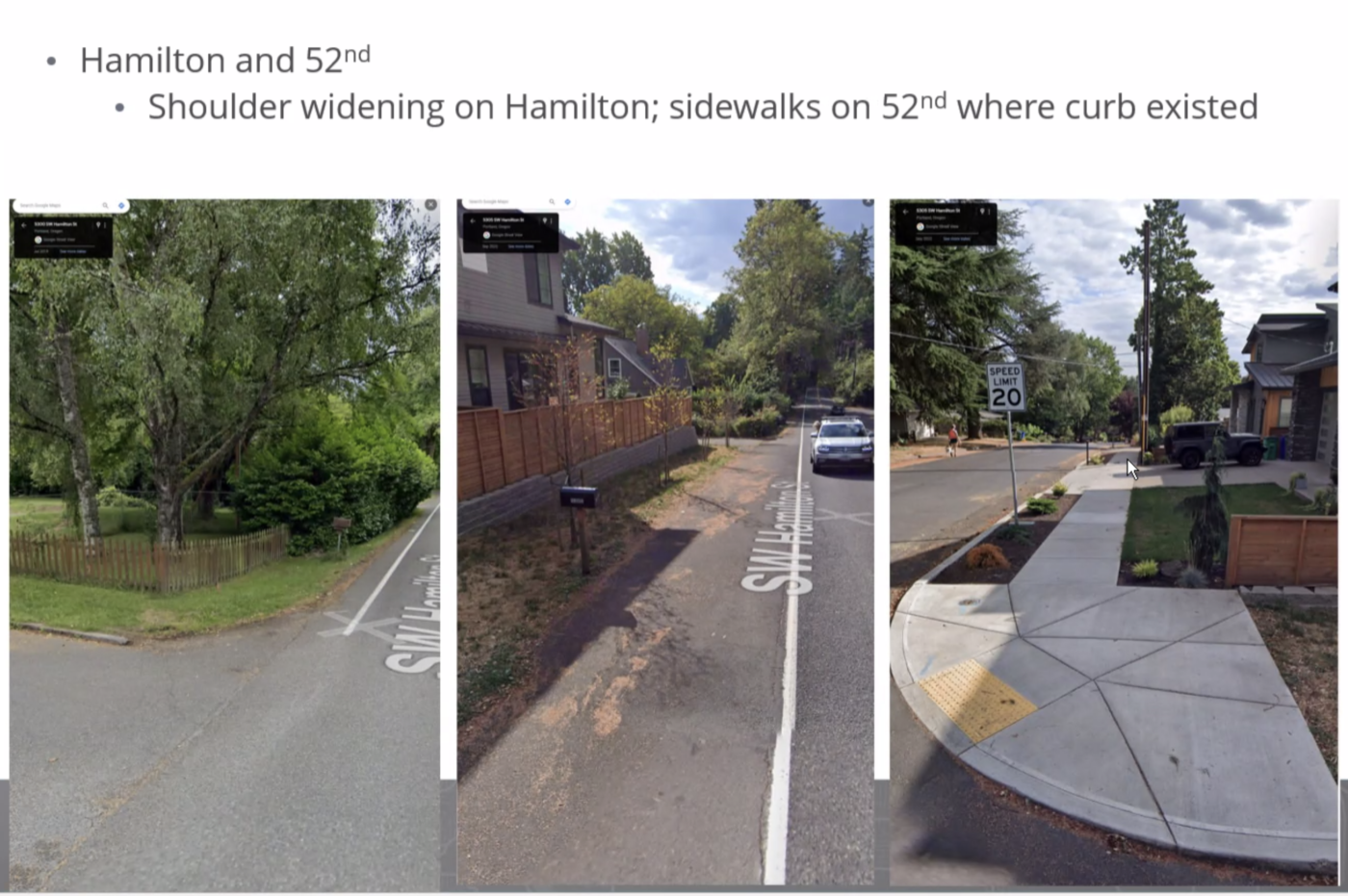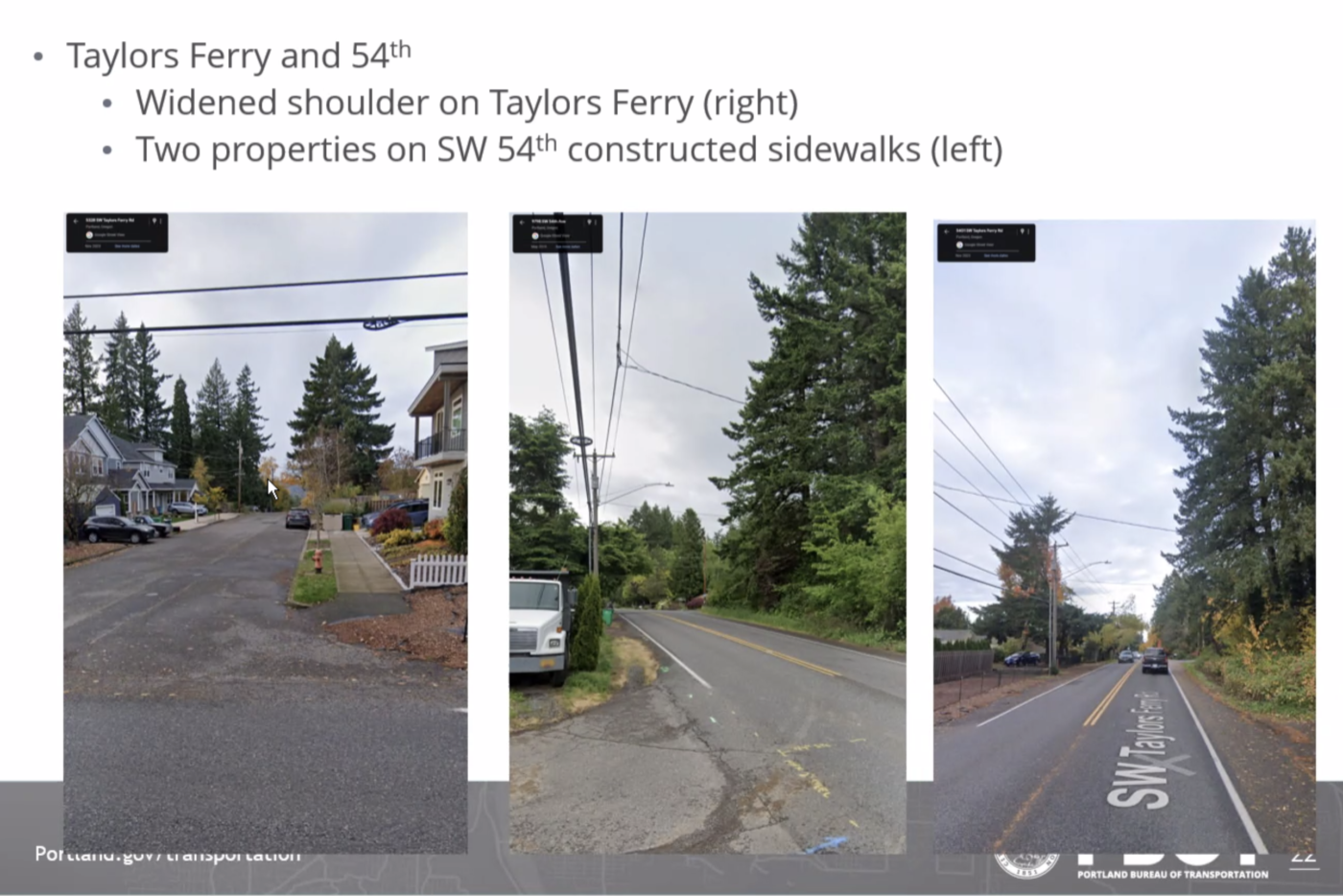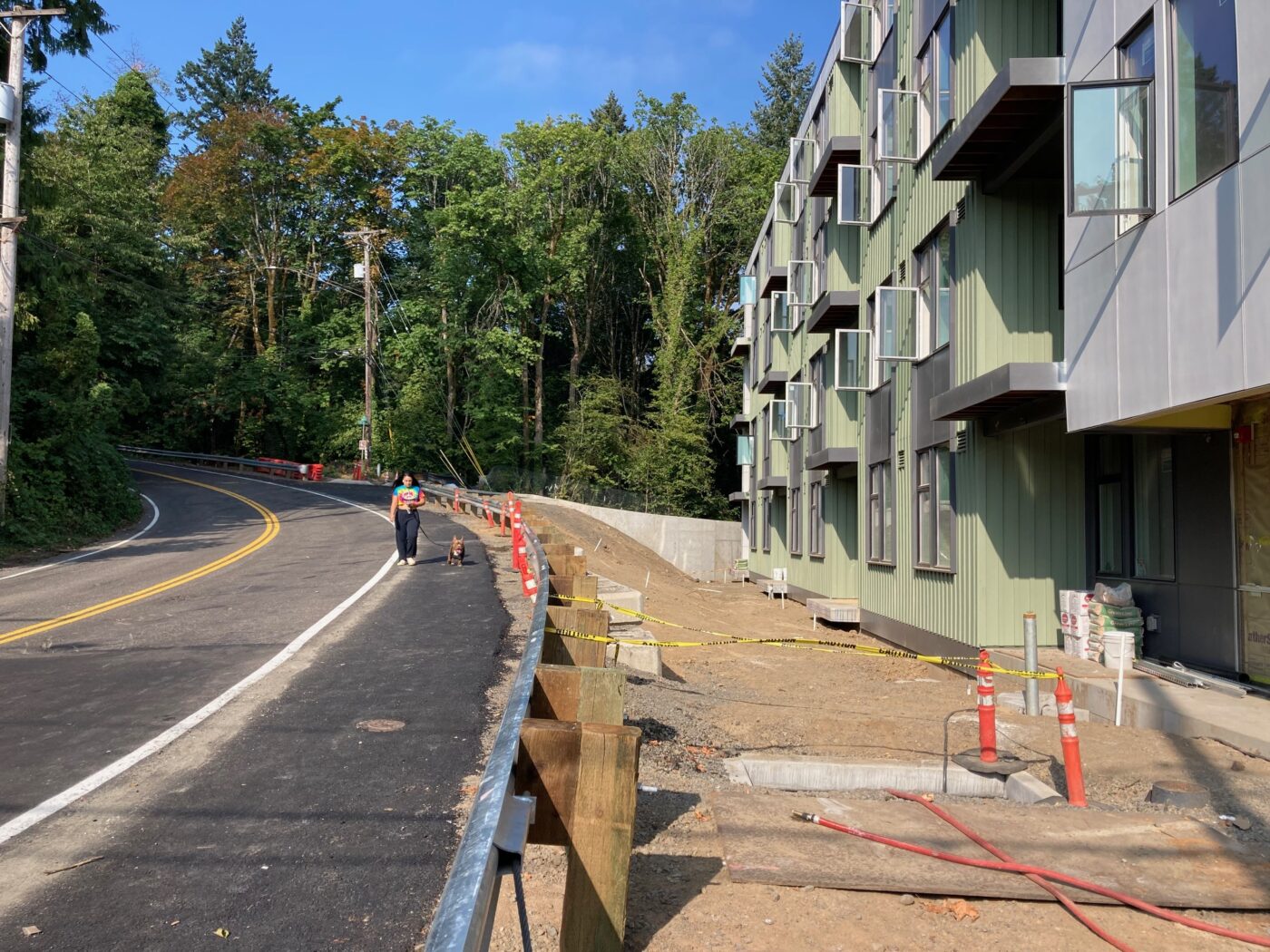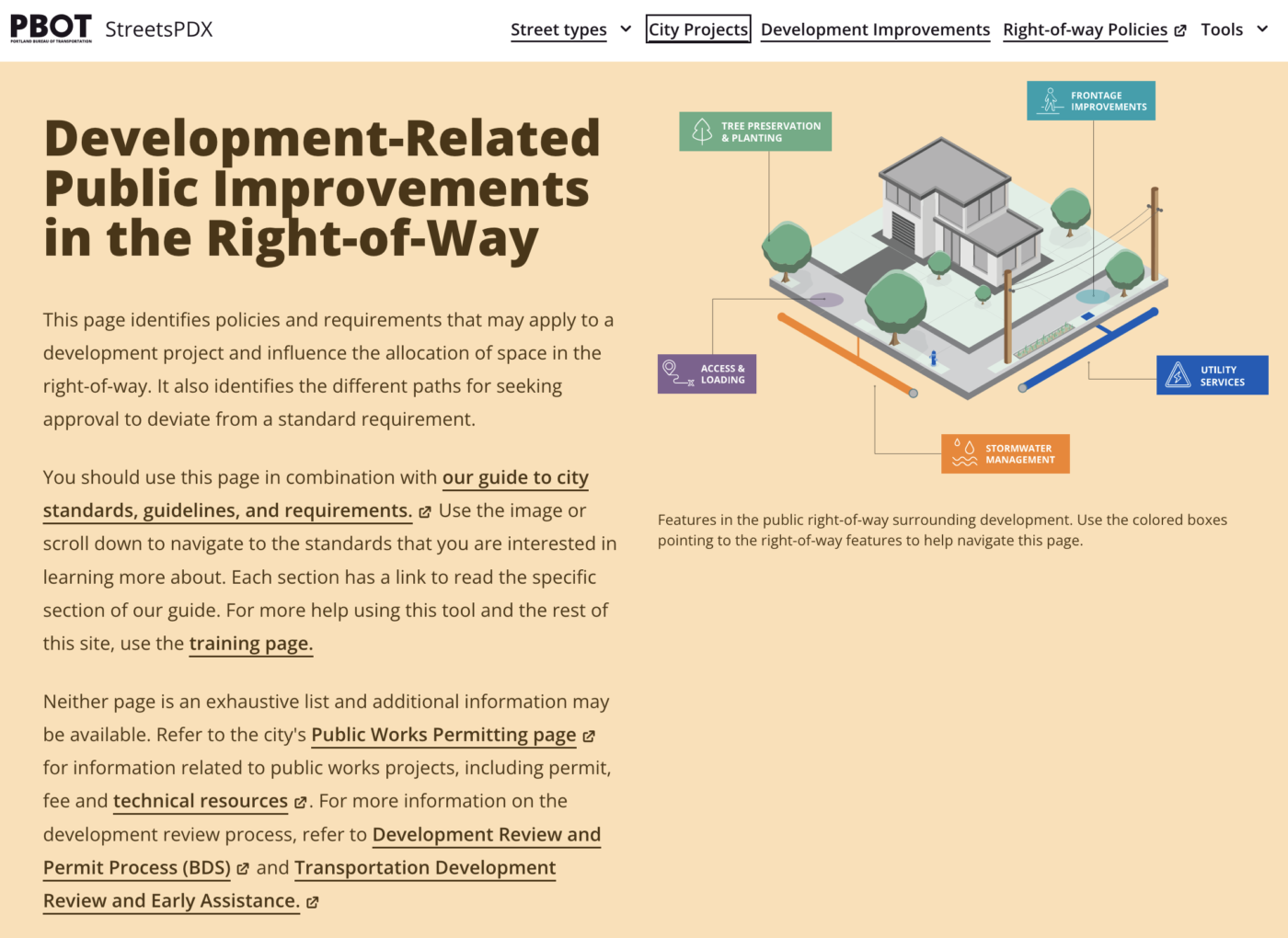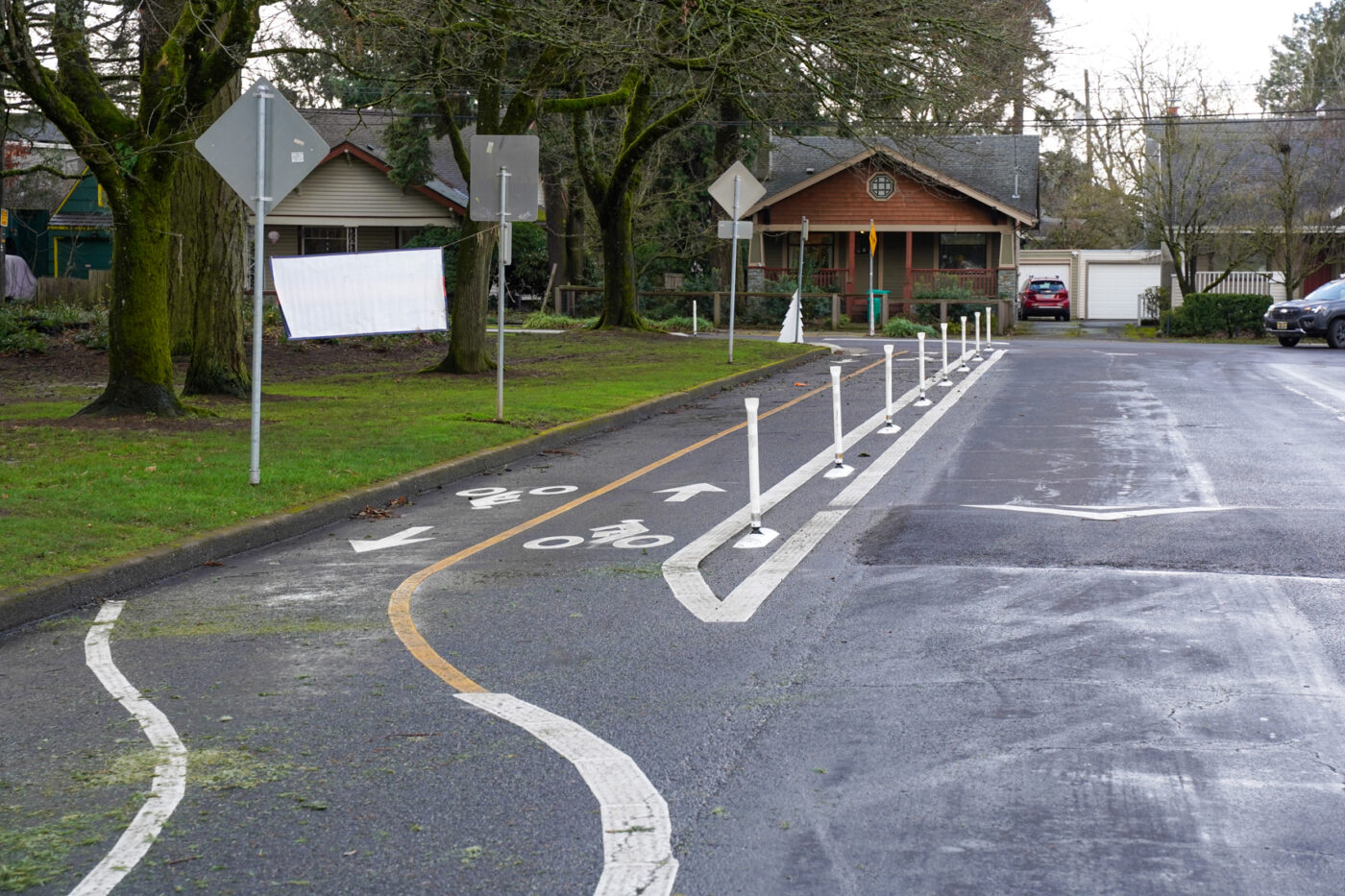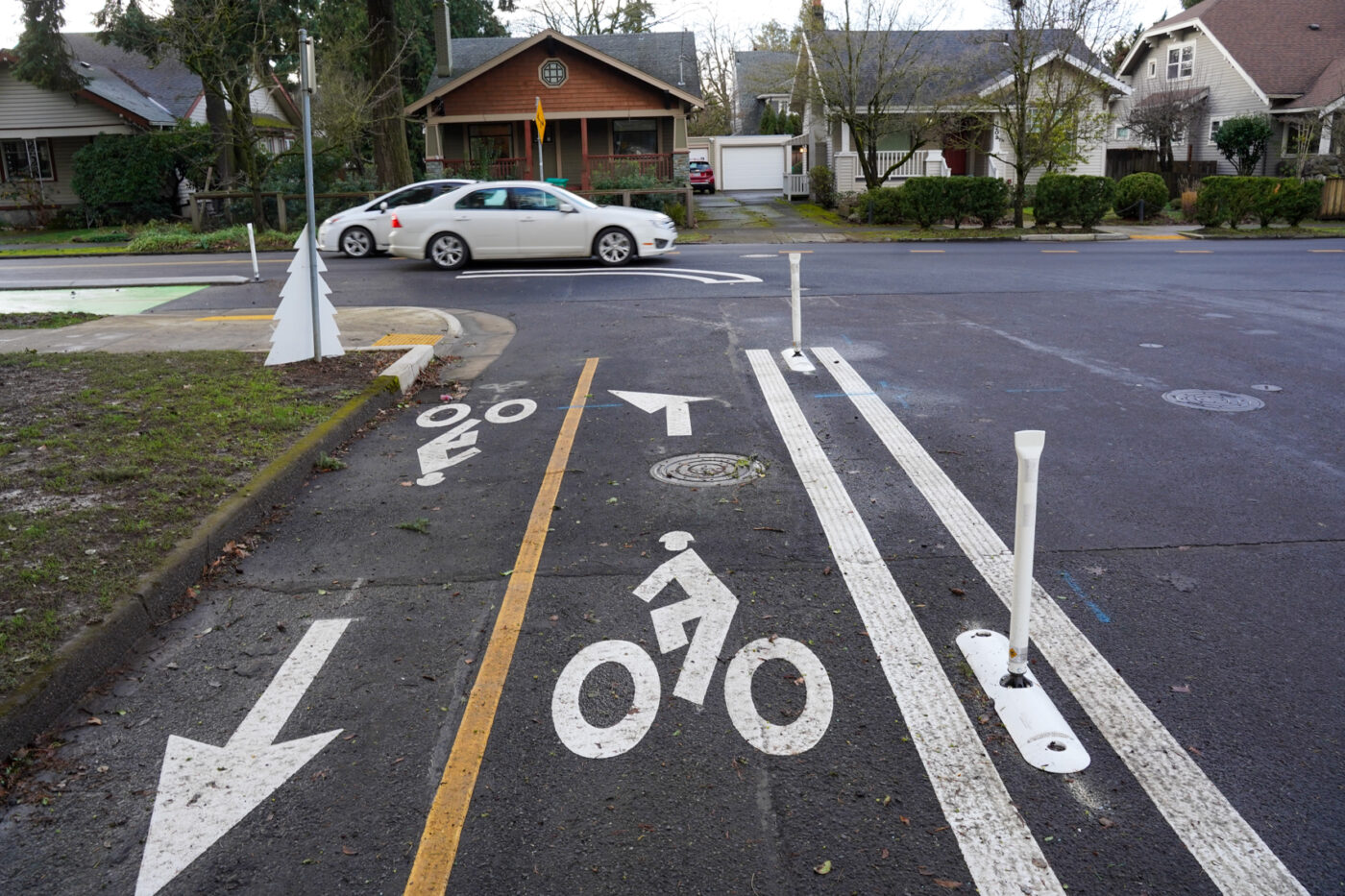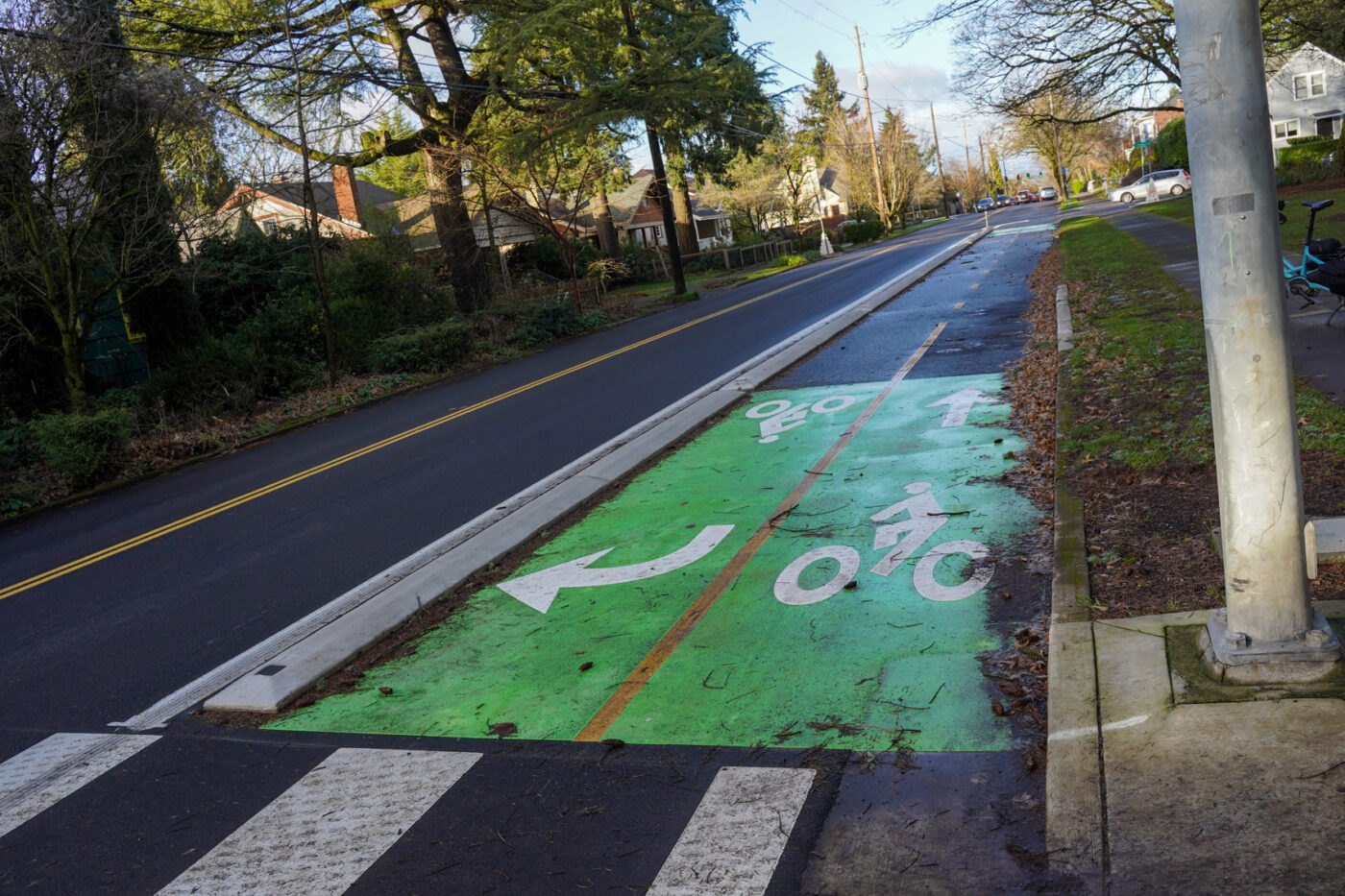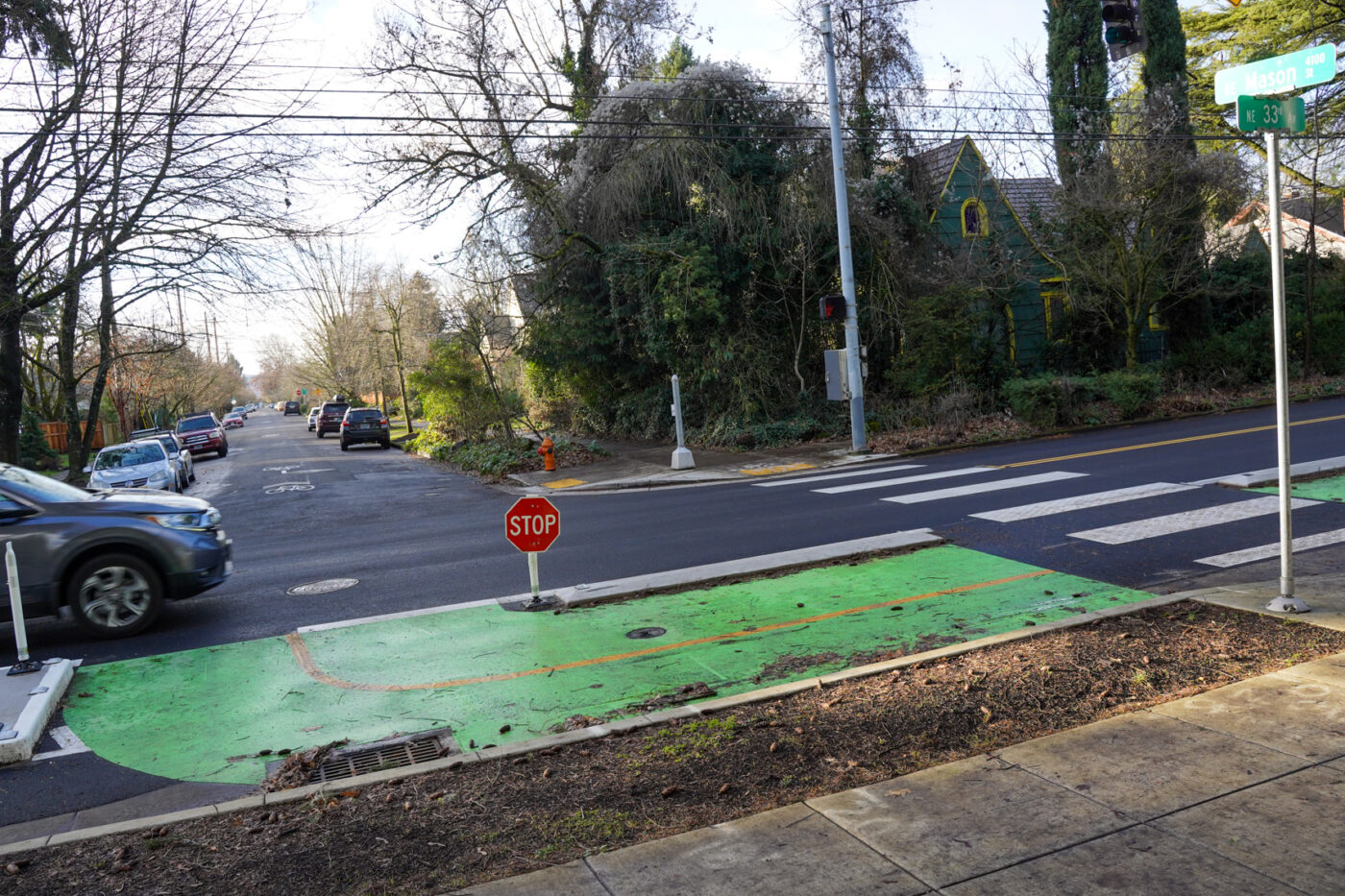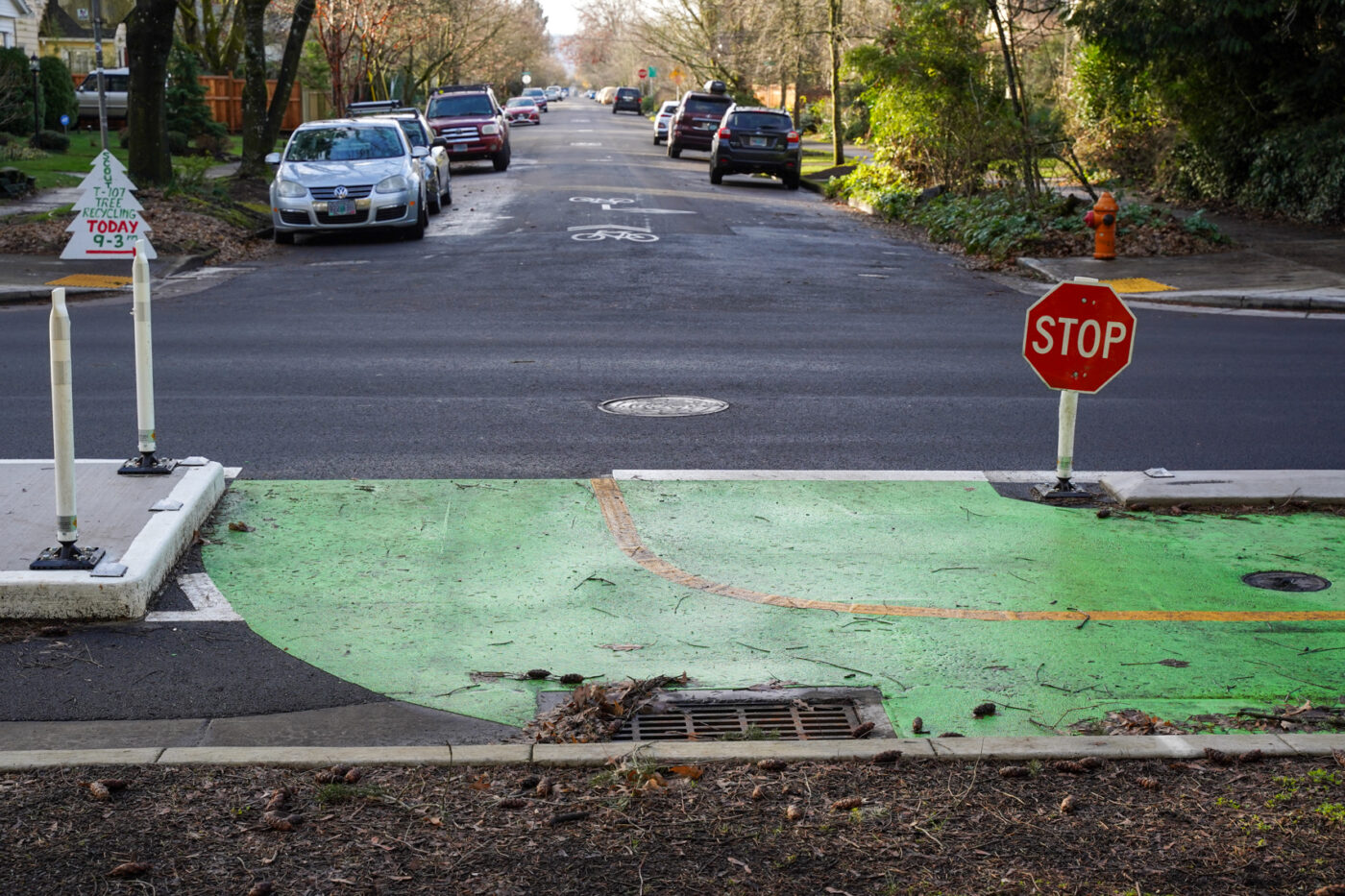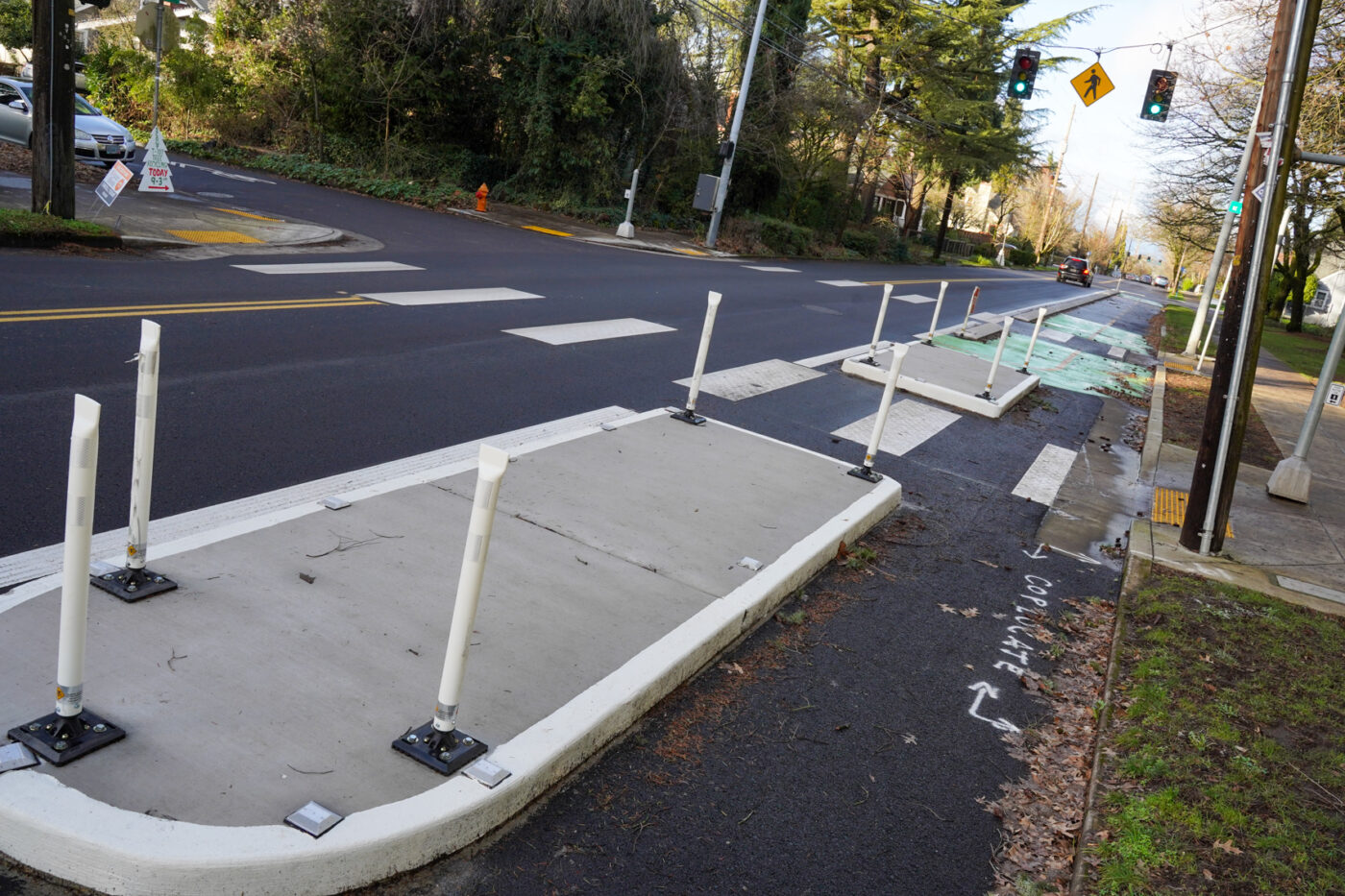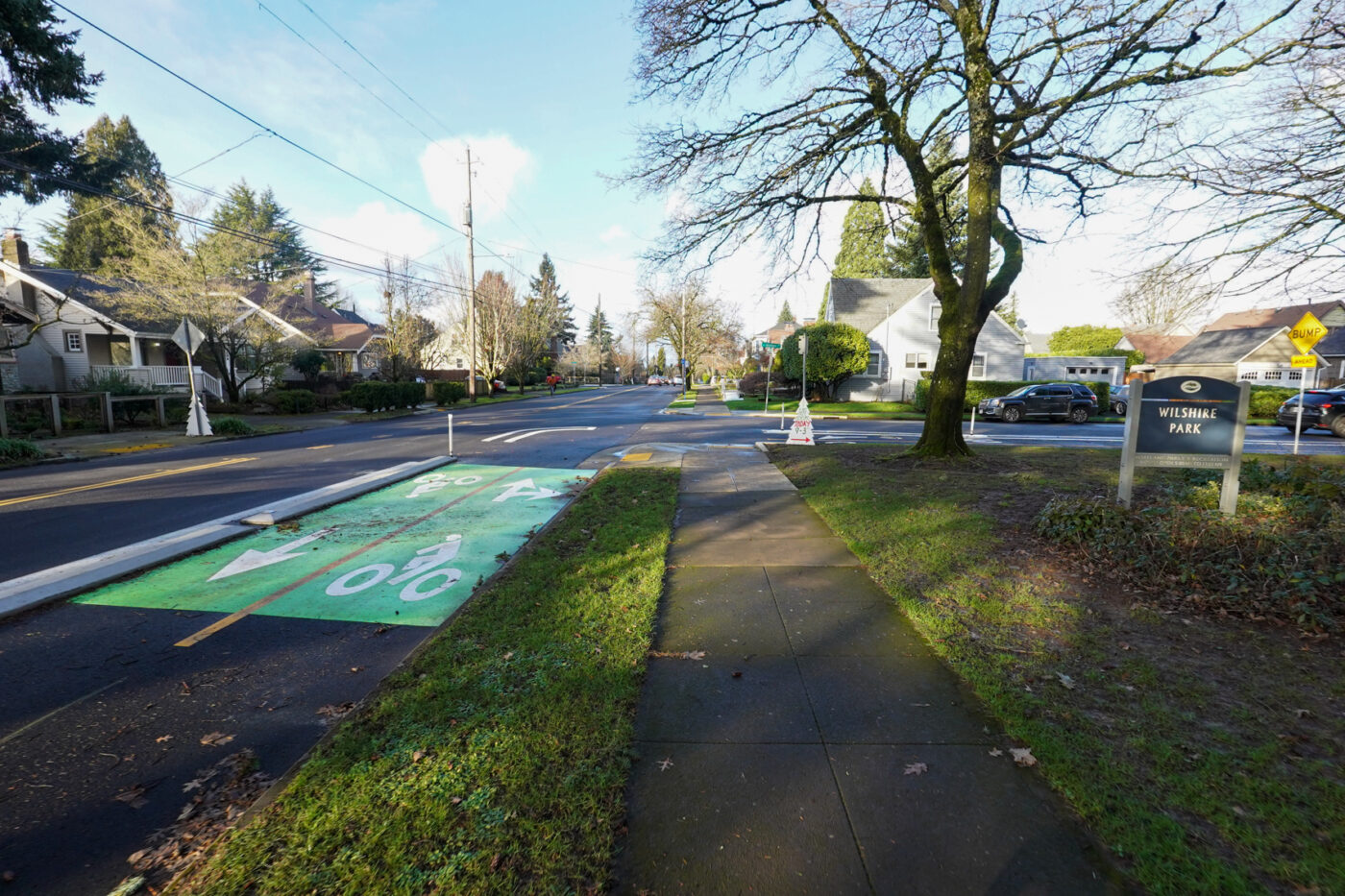Looking northwest on NE 33rd where PBOT has installed a new, two-way bikeway between Mason (on the left) and Skidmore (upper right) along Wilshire Park. (Photos: Jonathan Maus/BikePortland)
Over the weekend I finally got a chance to take a closer look at the new protected bike crossing and bike lanes on the Mason-Skidmore Greenway. It’s a welcome addition that makes getting across Northeast 33rd much easier and helps make an important connection in the bike network.
To refresh your memory, the Portland Bureau of Transportation took advantage of a repaving project on NE 33rd over the summer (the same one that led to the big bike lane removal controversy about one mile north) to make improvements for bicycling. With an east-west neighborhood greenway route planned on NE Mason and Skidmore, PBOT needed to do something about the offset crossing of Mason where it dead-ends into Wilshire Park at 33rd and they wanted to create a stronger connection between existing greenways on 32nd and 37th. Their solution was to put two separate projects together and do the 33rd crossing and the Skidmore bike lanes at the same time.
Looking west on Skidmore toward 33rd.
Looking west on Skidmore toward 33rd.
Looking west on Skidmore toward 33rd.
Looking west on Skidmore toward 33rd.
Looking south on 33rd from Skidmore.
Looking north on 33rd at Skidmore.
Riding south on 33rd just before Mason.
Looking north on 33rd at Mason.
View west on Mason from 33rd.
View west on Mason from 33rd.
Looking northwest on 33rd from just south of Mason.
Looking north on 33rd from just south of Mason.
Looking north on 33rd from just south of Mason.
Looking north on 33rd at Mason.
Looking north on 33rd at Mason.
Looking north on 33rd at Mason.
From the park, looking north at corner of 33rd and Skidmore.
Riding east on Skidmore toward 34th.
For the crossing, PBOT has installed a mix of signal upgrades, colored bike lanes, and concrete medians and curbs to create a short section of two-way protected bike lanes on the east side of 33rd between Mason and Skidmore. PBOT then continued the two-way bike lanes one block on Skidmore to 34th, where they dump back into a shared-street environment via a sharrow marking.
PBOT still needs to install some sort of signal actuators for bike riders to cross 33rd, but otherwise the new infrastructure worked well during my short visit. It was intuitive and I felt relatively safe.

